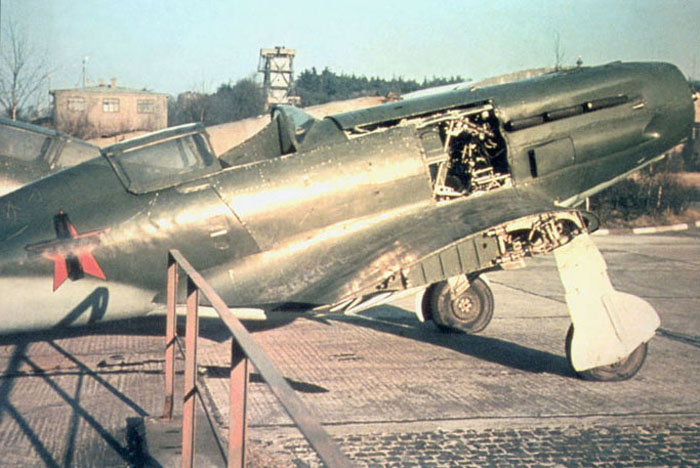
In the first days of war, Germans advanced quickly and reached many important airfields where thousands of Soviet planes were based. Among lots of wrecks, German captured at least 22 MiG-3s intact or nearly intact, all of early type of prewar production. Some of these were brought in Germany for evaluation and tested.
Germany proposed to Finland to sell 22 captured MiG-3s but Finns, well aware of the problems of this type, insisted to have them for free. After some time, the offer was cancelled because the planes were said to have been destroyed in an air raid. https://en.topwar.ru/60007-mig-3-dlya-finskih-vvs.html
Some survived MiG-3s were utilized by Luftwaffe for non combat duties, as meteorological reconaissance planes.
MiG-1
Left:
MiG-1 captured by Germans and exposed probably in Berlin during 1942.
There was a propaganda exhibition called "Russenparadies". This exhibition
was bombed by German communists, under the leadership of Bruno Baum.
In the photo, it appears lacking of some small panels and with tyres down,
not in flyable conditions.
Its charachteristics were:
- MiG-1, with smaller radiator than MiG-3, shorter nose, different undercarriage doors and wheels, without slats;
- without radio gear (the radio equipment and mast could have been originarily present);
- originarily painted with AII green background, with German dark green bands applied before the capture;
- the aircraft looks widely repainted with German yellow, Gelb 04, as usual on most captured aircrafts; the tail painting is hypothetical, because it doesn't appear on the photo; the external part of the upper face of the wings is yellow too;
- the fuselage and wingroots were repainted with a slightly darker color, probably dunkelgrun 71, to delete stars and wearing traces; the repaintings were made in such way to seem a camo scheme;
- German crosses on the wings are vaguely visible by darkening the image;
- no code was painted on the fuselage, nor probably under the wings.
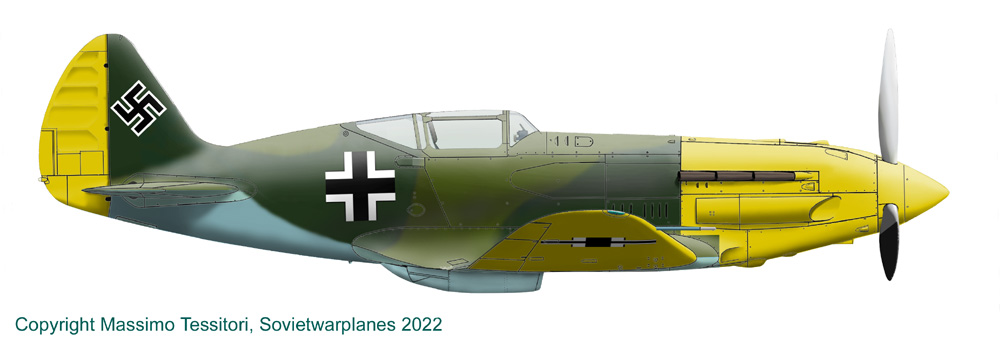
MiG-3 n.32
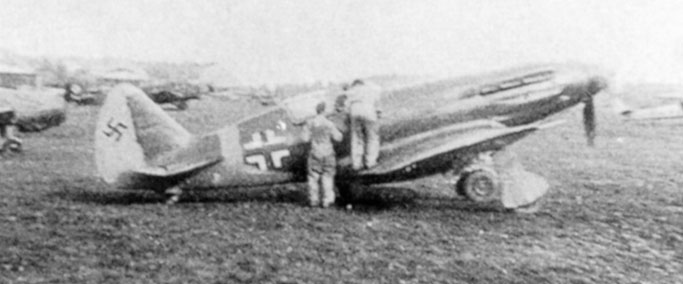
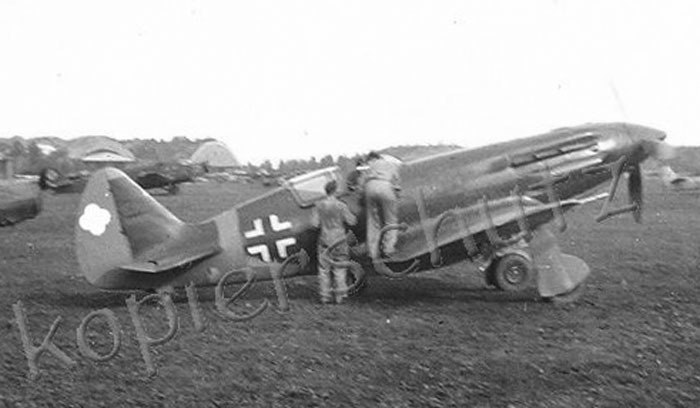
Two versions of a photo showing a MiG-3 captured and remarked by Germans, and tested perhaps in Rechlin air base in Germany.
The photo above, from Istrebitel MiG-3, of Medvedev, Hazanov, Maslov, shows that the plane had a swastika, probably with white outline, on its rudder.
The second image, from the web, is much clearer apart for the censored swastika..
Its charachteristics were:
- early type, without slats, without radio gear and mast;
- painted with the original Soviet colors AII green and AII light blue; the paints on the wooden rear fuselage and wooden wing outer panels should be a bit darker than on the metallic forward fuselage, a characteristic often observed in early all-green MiGs;
- the propeller blades should be aluminum on their front side and black on their rear side, except for their roots, aluminum as standard;
- the aircraft is overpainted with crude yellow identification bands and German national markings;
- wide yellow repaintings were made on the plane, including the rudder, probably the elevators, all the lower surface, a band on the fuselage, the stabilizer tip; it is unclear if it extended over the outer wing panels too;
- small areas of the original AII light blue are still visible on the fuselage under the cross and the stabilizer; one shows the original red line for lifting point;
- some repainting, and a thin hand made n.37 with a black outline seem visible on the stabilizer; this was probably written by Germans.
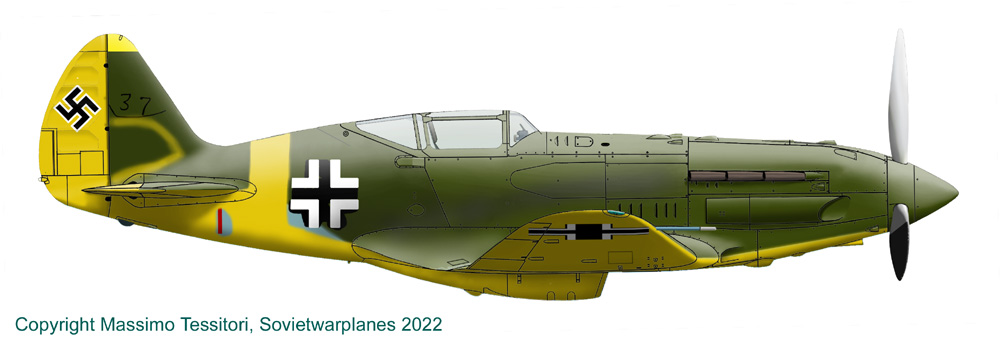
MiG-3 6+1
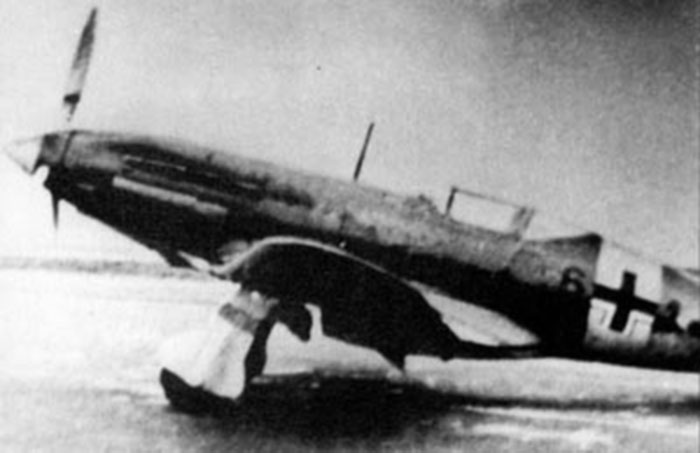
Left:
photo of early MiG-3 captured and remarked 6+1. The photo is poor, but allows to understand that the plane preserved the Soviet base AII green/light blue livery, with the addition of yellow areas on the fuselage, spinner, and probably under the wing surfaces and on the rudder and perhaps on elevators.
The original aerial mast and boxes were preserved at this stage.
Image from Barbarossa victims.
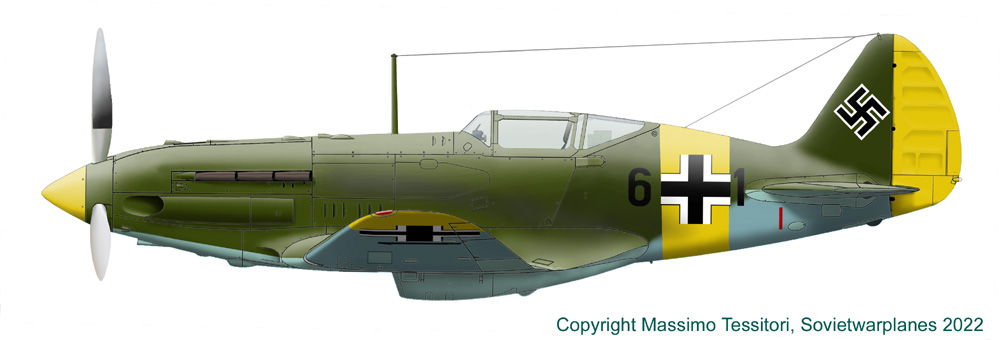
MiG-3 BJ+OA
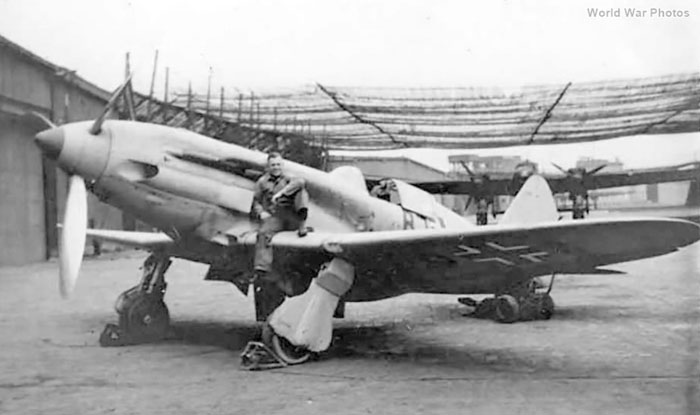
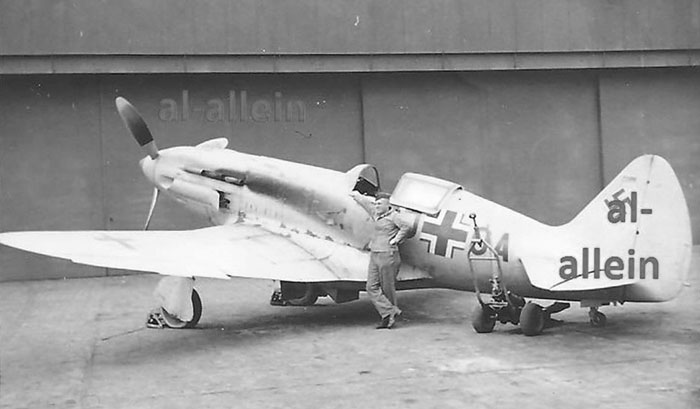
Left: two good photos of German MiG-3 BJ+OA, probably shot in Koln Ostheim airfield.
The photos seem to show an uniform light color: one could ask if it was all yellow or some light grey. To fly a foreign plane without a trace of yellow would have been dangerous for friendly fire; on the other hand, a fully yellow plane would have been in strong contrast with the camouflage net hiding the Dornier on the background and looks unlikely.
A third possibility is that the plane had both grey and yellow areas, that are fully undistinguishable on the bw photos. So we can guess the yellow areas from other planes.
The plane featured:
- early type MiG-3 without slats, radio and mast:
- additional trim tab (at least) on the left aileron;
- prop blades in silver and black, as on the original;
- black crosses with white-black outlines on six positions;
- black swastika with white outline painted on the fin;
- unreadable small inscription on the fin over the swastika;
- the code BJ+OA is readable both on the fuselage sides and under the wing surfaces;
- light rings seem to have been painted on the tyres, probably not the original ones; it is possible that thewheels were adapted from another type of plane;
- the armoured backrest seems to have been replaced with a non original unarmoured one.
Images from the web.
Below: a reconstruction of the possible look of this plane.
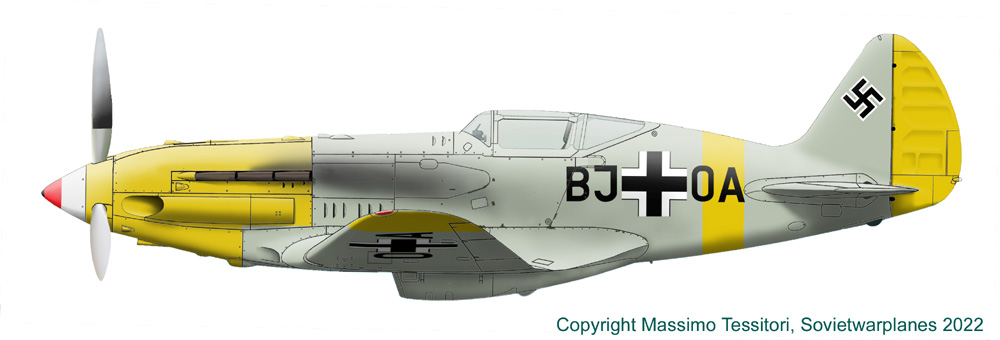
MiG-3 CT+SV
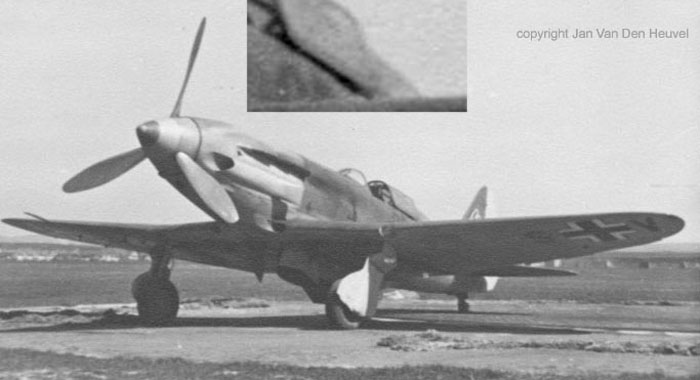
Left: photo of MiG-3 remarked and flown by Germans.
- The codes are only partially visible both under the wings and on the fuselage sides; they could be CT+SV.
- While the photos of plane BJ+OA show an embarassingly uniform shade of grey, the photos of CT+SV shows an equally embarassing abundance of shades of grey.
- One can suppose that the darker grey was some shade of green, original AII green or more likely repainted with German dunkelgrun 71, and the upper part of the nose was yellow as on some other known MiGs.
- The lower part of the nose look painted with an irregular darker shade, that in darkest strokes seem similar to the uppersurfaces; one could suppose that it was temporarily painted with an irregular layer of the same green of the uppersurfaces because of some repair.
- Apart for this repainting and perhaps a simlar one on the sides of the rear fuselage, the lower surfaces could have preserved the original Soviet AII light blue, that was darker on the lower part of the rear fuselage.
- The yellow parts are supposed to be on the cowling, part of the spinner, under the wing tips, and a band on the rear of the fuselage (detectable by a discontinuity of the dark profile of the back of the fuselage, but not recognizable on the part below).
- The rudder seems lighter than the supposedly yellow cowling, but this could be due to an angulation that receives more light from the sun, and yellow makes more sense than white.
- The intermediate band of the spinner seem lighter than the cowling, and could be white.
- The front of the spinner is darker and could be red with a black point.
- The plane is an early MiG-3, without slats and radio mast.
- The original armoured backrest looks preserved.
Photo copyright Jan Van Den Heuvel
Below:
attempt to trace a profile of this MiG-3. Of course, other interpretations of the image are possible.
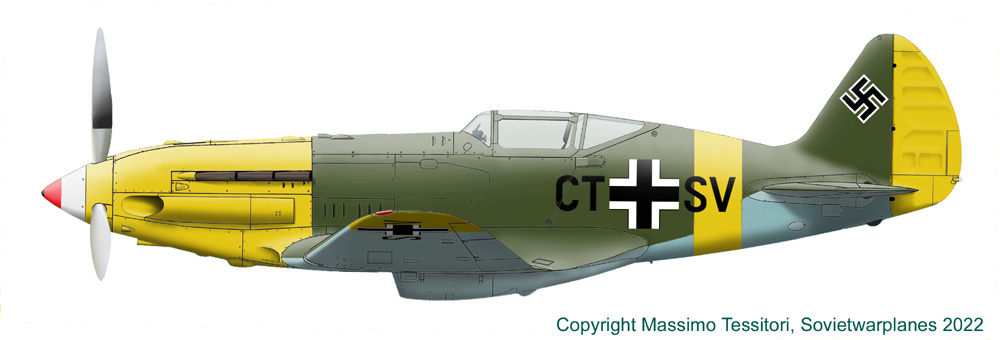
MiG-3 CD+??

Left:
Plane CD+?? shows a fully light nose (light grey upper and yellow lower part?), black prop blades and stripes on the wing roots, and what could be a German splinter camouflage (70/71?).
The triangular emblem on the nose is noteworthy; it belongs to Luftdienst (air service), auxiliary units with liaison planes, meteo reconaissance and similar. A similar emblem was used by an unit that included B-71 (Czech built SB).

The smaller triangles in higher position are indications for the fuel refuelling.
Image from Foreign Planes in the Service of the Luftwaffe of Jean-Louis Roba